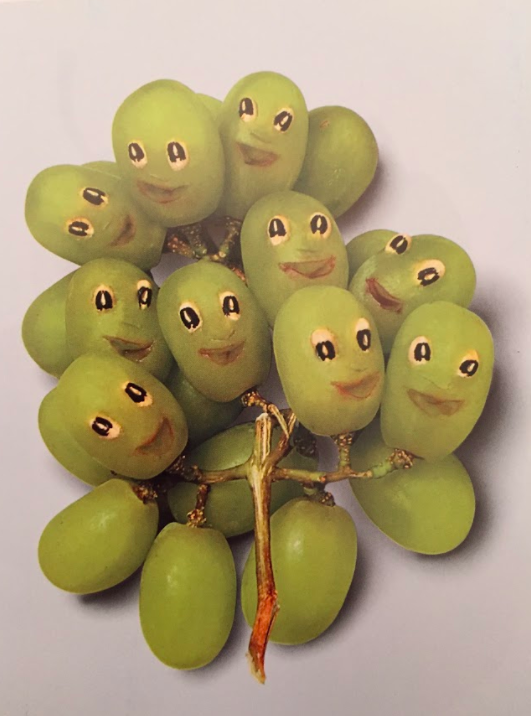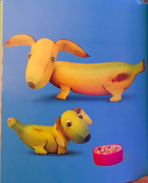|
(You will find all of the resources mentioned in this post, in addition to others, here.) There are multiple Notebook files; please email me if you would like these files in PDF format. We are preparing for a massive dumping of snow tonight here in Vermont. I decided I should pass the time curled up with some hot chocolate, blogging about one of my favorite units I do with my six graders: snowmen! I had been doing one isolated snowman activity for a long time, but a couple of years ago I discovered some new things and from there it just, pun intended, snowballed! I can be a bit of a traditionalist, and I really like for my students to memorize and recite poetry. I think it’s a good exercise to help students make the connection between spoken and written French, and I believe it is important for students to become comfortable speaking in front of others from a young age. So for years my students have been memorizing the Jacques Prévert poem, « Chanson pour les enfants l’hiver. » We usually start working with it in January right after we come back from vacation. (Part two of this post, which I will write next week, will highlight the fantastic random connection between this poem and a popular French pop song from a few years ago I made back when students who are now college sophomores were in sixth grade. SO. MUCH FUN!!!)
I loved having not just one, but TWO fun MTs to do. They are very different, but complement each other well. So how happy was I? Super. MTs are my absolute favorite, and I was able to get so much mileage out of these. But then IT GOT BETTER. In February of that year, Mary Peters, a colleague of mine at the Richmond Middle School in Hanover, came up with a great Pictionary activity with some of the classic Calvin and Hobbes snowman cartoons. The teacher describe one of the cartoons, the student draw what they hear. They then see the sentences written that they had just heard orally, then make comparisons between what they drew and the actual Bill Waterman images. And if that weren't enough, my father sent me some fun snowman cartoons that we discussed in class! I have a lot of follow-up activities, both for each video individually and some activities that combine the two videos: worksheets, readings, sentences to cut up, and small printouts of the screenshots from both videos with which students can do a variety of activities. (Directions, in French, for those activities here.) This whole unit usually takes me from the first of the year to our February vacation. It’s very timely, and even if you do not live in a location that experiences tons of snow, I hope you can find something worthwhile here.
Have fun, stay warm, and let me know how you like these lessons! Bisous.
8 Comments
...you do Movie Talks featuring kids, dogs, and lemons!
And then.... You spend lots of time exploring images from books by Saxton Freymann, such as How Are You Peeling? and Fast Food. SOOOOO much fun!
Bisous. GAH!! So much to write about! But I'll take it slowly (never easy for me!), and give a little at a time. I wanted to share something I'm doing with my fourth graders right now. (I started this in the first week of school.) These are the first students at my school who, as fourth graders, have already had two years of French. I've been their only teacher, so I know them quite well, but I have made it a goal to include even more personalization in my classes this year. So we started the year with a Card Talk around food; on a regular sized piece of paper, students drew two things they liked to eat, and one that they didn't. This allowed for a lot of PQA, sharing, and community building. After a couple of weeks, we finished going through their drawings, wrapping up with some true/false and fill in the blank questions. (See the video of that class here.) Then I did a Picture Talk, which I've never done. I chose some photos from the book Hungry Planet and made a Notebook file with them. (Some of the photos from the book are in this Time article.) We did a little “geography lesson,” looking at the large world map I have in my room. The first photo I showed the students was the image below. We talked about what we saw, and then I asked how much they thought the food cost. (This was a fantastic opportunity to bring in big numbers, which are annoying in French!) I taught the the words for "fresh" and "packaged/canned," and we compared which countries had more fresh and more packaged food, how many people. (I'm gone today at the TCI Maine conference, and I left this reading with this chart for the kids to do with the sub.) NB-Annabelle Allen just reminded me about using Google Maps street view to look at places. I'm going to go back next week and revisit the photos from the book looking at where the families live! All of this is is in preparation for my FAVORITE activity: Movie Talk!!
(I used the animated short Feast; here's a link to ALL of my resources for the clip.) There is something to keep in mind about this "unit." I came up with this idea THE DAY BEFORE SCHOOL STARTED. I ditched all of the plans I had created and started from scratch. And it just keeps growing. There's a good chance I'll just be wrapping up right when report cards go out and parents come in for parent/teacher conferences. AND THAT'S OK! CI enables us to be flexible, and that is so liberating. Again, check back in a couple of weeks to see how it all plays out. Bises. This year at the VFLA annual conference, I was lucky enough to "share the stage" with the amazing Laurie Clarcq. After lunch, I gave a short follow-up to a session I had done last year at the VFLA conference on Movie Talk. The focus this year was parallel storylines, which I had seen for the first time at NECTFL in February. Mike Coxon, Eric Herman, and Blaine Ray did an amazing demo of this technique that I knew would change my teaching. So I thought and thought, and decided to do this activity using "Runaway" as my Movie Talk video. (Check out that video here.) My dad was going to come into my classroom to film this, and I was planning on using that footage as the focus of my presentation. But, it was March, and I live in Vermont, and Mother Nature decided to throw a curve ball. We had a huge snow storm the day I was going to do a MT with a parallel storyline for the first time, and alas, no school. I had no idea what to do until I was talking to a (non language teacher) friend who suggested I do the lesson with live teacher actors as a demo at the conference since I didn't have a video of my class. It ended up being genius. Teachers still had the chance to see this technique in action, and I had a "dry run" before actually trying it with my sixth graders. It was relatively successful: 80% of those who responded to our evaluation strongly agreed or agreed with the statement "I found Allison's presentation helpful and useful." One respondent said, "Thank you for the reminder of how this can work. I love your demonstrations and your energy." The next day, Laurie spent the day working with me and several colleagues. She had a great idea: I should teach the lesson I had intended on filming with my students prior to the conference that day. I agreed to take over from my substitute for one class, and Laurie and my colleagues were able to watch the lesson in action. Here's a video of the class; you may want to read the rest of this post before watching the video. The lesson unfolded this way: I prepped the vocabulary the way I normally (see this old video from last year, when I was doing a more traditional MovieTalk lesson).
Once I PQA-ed and gestured the vocabulary important to the video, I showed the first bit of the video and did some questioning, as I normally do. Then, I stopped. I chose two student actors, who would act out a story that paralleled the plot of the MT video. We had watched as far as the refrigerator's handle falling off. We then carried on, abandoning the original video and shifting to traditional TPRS story-asking. Once we had come to the end of the plot for our new story, we finished the video. I did not pause and ask questions while we watched the video, as I normally do. Here's where things got interesting. I did some of my traditional follow-up activities: true/false, Pictionary, put the events in chronological order. We then moved on to a reading of the original video. (You can check one of those out here.) I did this slightly differently this time. Normally, I write the reading and do activities with it. This time, I had students retell the plot of the video as I wrote it down. I projected the story on my SmartBoard, so students could see in real time what I was writing. (I have three classes, and we ended up with three different readings. If you click here, you'll find a folder containing all three versions.) During the next class, we did the same thing with the plot of the parallel storyline that students acted out. In class, I then had students draw storyboards of the parallel storylines (We used a sheet that's 3x3, and I gave students two minutes per square. I wasn't aiming for amazing drawings, just something they could use for their homework.) Students had two homework assignments: 1-show the video to a family member and narrate during the viewing, and 2-retell the parallel story using their storyboards as a "script." However, it was at this point that things took an interesting turn. When students were retelling the parallel storyline to me and I was typing it, I realized that it seemed a lot like a script. So, we began to modify it. And it took off. We ended up creating a whole play from our script. In two of the classes, each student had a different role: actor, narrator, or, in one class, producer. In the third class, every student wanted to act, so we did three different versions of the same script. Here's one of the first kinds of videos, with all student actors. I'm still in the process of finishing these videos, but I'll let you know when they're all done.
Sometimes you just have to run with what interests the students. I'll admit, there was a lot more English spoken than I would have liked during the actual filming of the videos, but seeing the students' enthusiasm and engagement made me realize how worth it it was to "go with the flow." I'd love to hear your thoughts on this, or how you've used MT and parallel story lines in your classes, successfully or not! Merci! |
AuthorAllison Litten, the 2019 VFLA TOY, teaches French at the Marion Cross School, a public PreK-6 school in Norwich, Vermont. This is her twenty-third year teaching, and twentieth at Marion Cross. Archives
May 2023
Categories
All
|













 RSS Feed
RSS Feed
